4Wall In The News
The Holodeck Experience at MCAAD

This artical was origianlly posted by PLSN and can be found here.
The Milken Center for Advancing the American Dream (MCAAD), a ground-breaking immersive venue located in five historic buildings in the heart of Washington, D.C., had its grand opening in September. The nonpartisan MCAAD is an educational organization, dedicated to betterment of health, financial awareness, philanthropy, and the key challenges facing the wider world. They've created 70,000 sq. ft. of exhibition space that explores bold ideas using powerful storytelling and immersive technology to engage visitors. MCAAD was looking for a way to provide an exceptional immersive and interactive experience for visitors to explore stories in a memorable and compelling way, and so the idea of a real-life 'Holodeck' was proposed-a space that surrounds the guests with LED screens and audio. While being a great technological storytelling tool, the concept raised numerous engineering challenges, such as how to mount a room that's completely clad in LED screen inside a historic space which had very tight weight and space restrictions, along with the need for robust entry and egress control for the visitors.
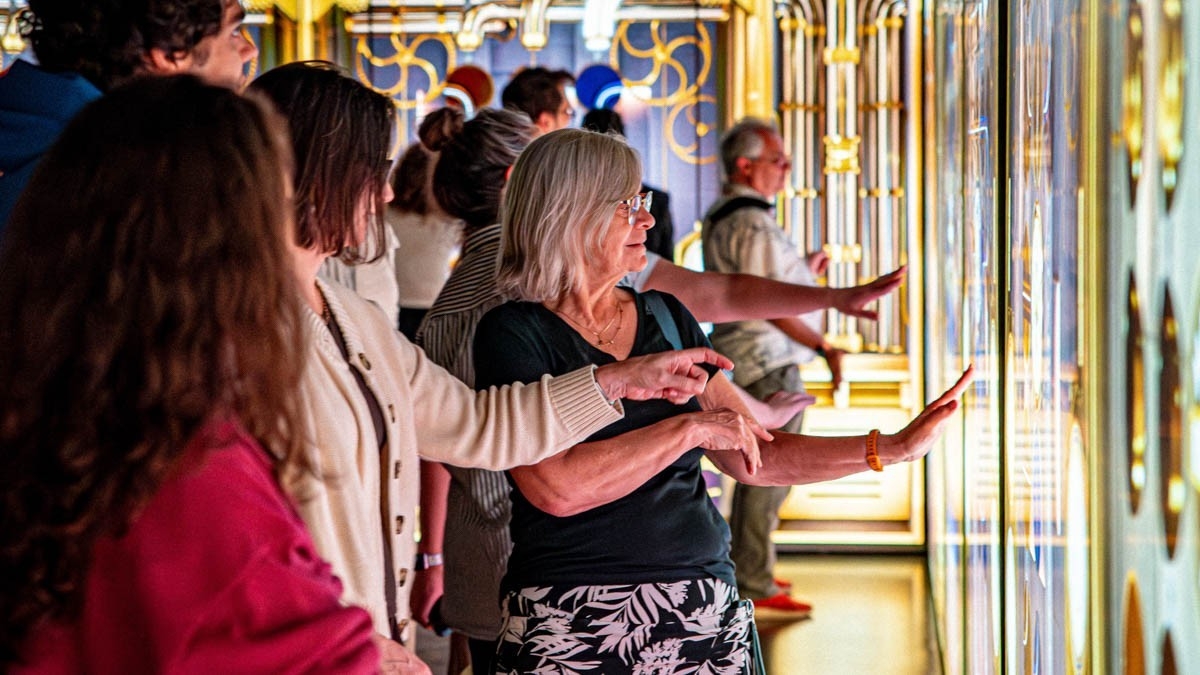
The myriad solutions to these real engineering challenges in a historic building and the realization of the Holodeck idea was the result of a tight technical partnership between 4Wall Entertainment and TAIT. 4Wall was the lead systems integrator, overseeing the technical side in terms of video, audio, and control for the entire MCAAD complex. TAIT brought their engineering and fabrication expertise to bear to make a Holodeck structure while staying in the space and weight limitations. The content for the stories told on the surrounding screens was created by Moment Factory. The result is MCAAD has created a unique visitor experience, with a 360° multisensory Holodeck-like experience that explores different American Dream stories brought to life with interactive technology. Officially titled the 'Perpetual Story Machine', visitors can learn about the diversity and spirit of the American Dream through animation, live-action video, and soundscapes in a 35-minute program.
This highly immersive, multi-sensory storytelling space is a wonderful example of the reach that the production technology industry has beyond event and entertainment productions. To learn more about the work of both 4Wall and TAIT on this project, PLSN spoke with Senior Director of A/V Systems & Design, John Ackerman of 4Wall and Project Manager, Rawi Fayed of TAIT on the challenges and solutions to this engineering marvel at MCAAD.
4Wall Entertainment
John Ackerman, Senior Director of A/V Systems & Design
Give us an overview of the MCAAD Holodeck project.
The Holodeck went through a lot of planning and development. We sat down and started brainstorming-maybe we shouldn't have corners; should it be round or a ball; how do we get into reflections? If we were given X amount of people in the space, then we'd need X amount of space for support equipment to make it do its thing. We talked about adding lights, air puffers, smell-o-vision... You name it, we talked about it.
Also, the Holodeck itself moved around the building a couple of times. We ended up in the historic 1501 building and the Holodeck is in a floor that also has the job of supporting the landmarked ceiling below. Now we were talking about adding all this infrastructure with a massive restriction on what our point loads could be in terms of weight. Normally, you don't really think about it. You're going into a purpose-built event space; weight is weight. Here, weight was everything. No one wanted to trash the very expensive historical ceiling below.
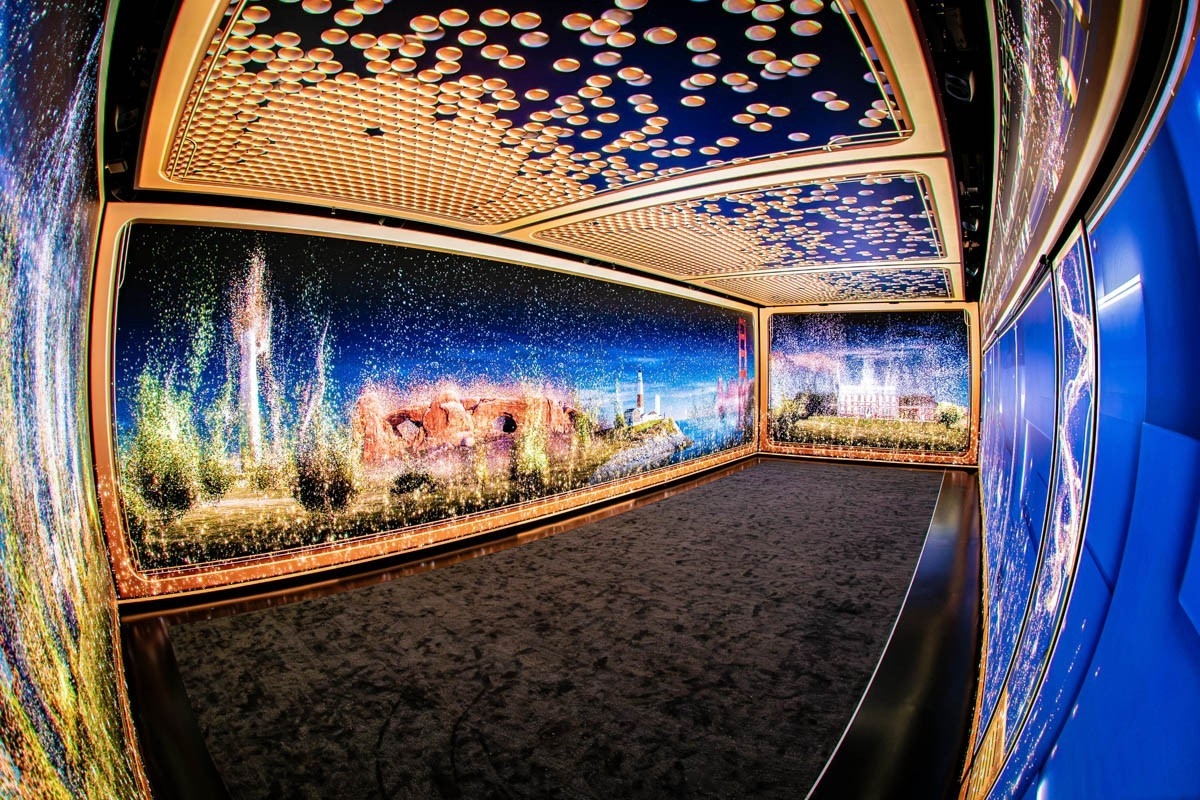
We had an internal meeting and talked about a few companies we could work with on the structure, and we made the decision to partner with TAIT. Because TAIT was so busy, they chose to build it in their UK facility, so we had their great team out of the UK, where the structure itself got built.
Beside the weight limits, what were some of the other challenges with the Holodeck?
Once we got past not having to worry about not falling through the floor, the next restriction was we were out of power, before we even started. The building couldn't get anymore power from D.C., which also meant no more power, no more air conditioning. They wanted to get as many people as they could through these spaces, so they looked at robbing Peter to pay Paul to get all the AC-and the power it took-that they could in there. Of course, with weight and power in mind, they then wanted us to find a cool LED product for the screens, and it had to look good with the great content from Moment Factory.
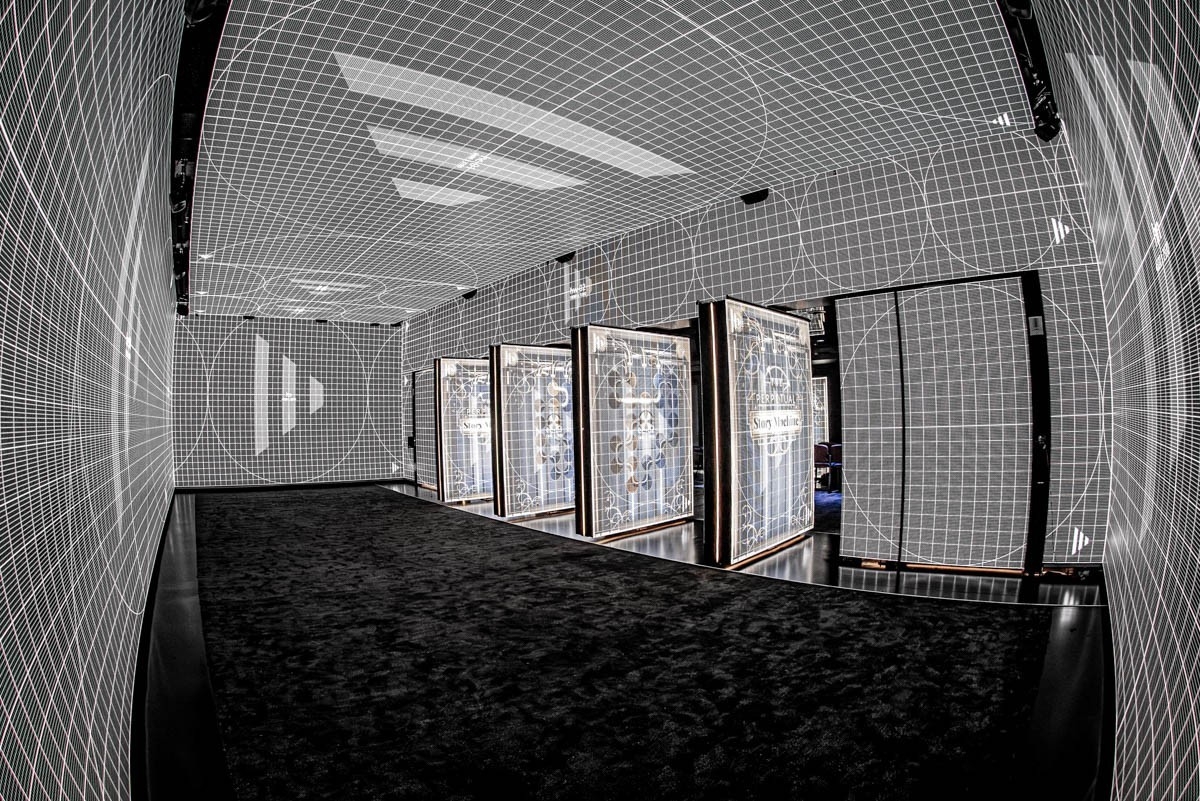
We were choosing products at ISE in 2023 and looking at every LED panel on the planet. It was the early days of Chip On Board (COB) and too early for MIP [Micro LED in Package]. We spoke with the people at CreateLED, and they had a product that was cold to the touch. We got a sample wall demo and tested it for nine months so we could get the feel for it. It took about a year, but we were then confident we had our LED product. We went with MegaPixel processing for the LED screens. MegaPixel really saved the day on this project. We were so fortunate with the choices we made. From the time the project started to the time we purchased and made the install, MegaPixel doubled the bandwidth on the output side of the processor. It saved us a full rack of space and of switches. Also, I trust their processor's Green Mode. When you send the processor to black, five minutes later you get a green leaf on the readout, and the power draw goes down 25W per Sq. M., which is golden. That's a great feature because when you combine that with a more efficient LED product, your power when you're on is lower, and your power when off is lower. It's great.
Is every surface clad with LED panels?
Not quite every surface. All the walls, ceilings, and doors are covered in LED panels. We ran out of height and weight, so the LED floor was cut. But there is comfy carpet if people want to sit or lie down to enjoy the experience.
The whole structure is ground supported, correct? It's not touching the ceiling or walls.
That is correct. It's a box in a box. TAIT redesigned and redistributed the support points, so it's only supported on the perimeter. We had to distribute the weight that carefully. They did a great job.
What media servers did you choose to drive the content playback?
As with all things, it was an evolution. They wanted the content to be interactive. So we considered, should we go with Pixera? But Pixera Two wasn't out yet. Do we go with Disguise? How do we approach if from Moment Factory's point of view? Our experience, and our people, know Disguise. That's where they're comfortable. Also, Moment Factory really wanted Disguise. So, we went with Disguise VX3 media servers, and we used every MIP that system has. Chet Miller on our team spent months balancing and rebalancing the loads. It's a complex environment, but we got the controls down to a touchscreen tablet that the docents at MCAAD can just push a button and run all of this.
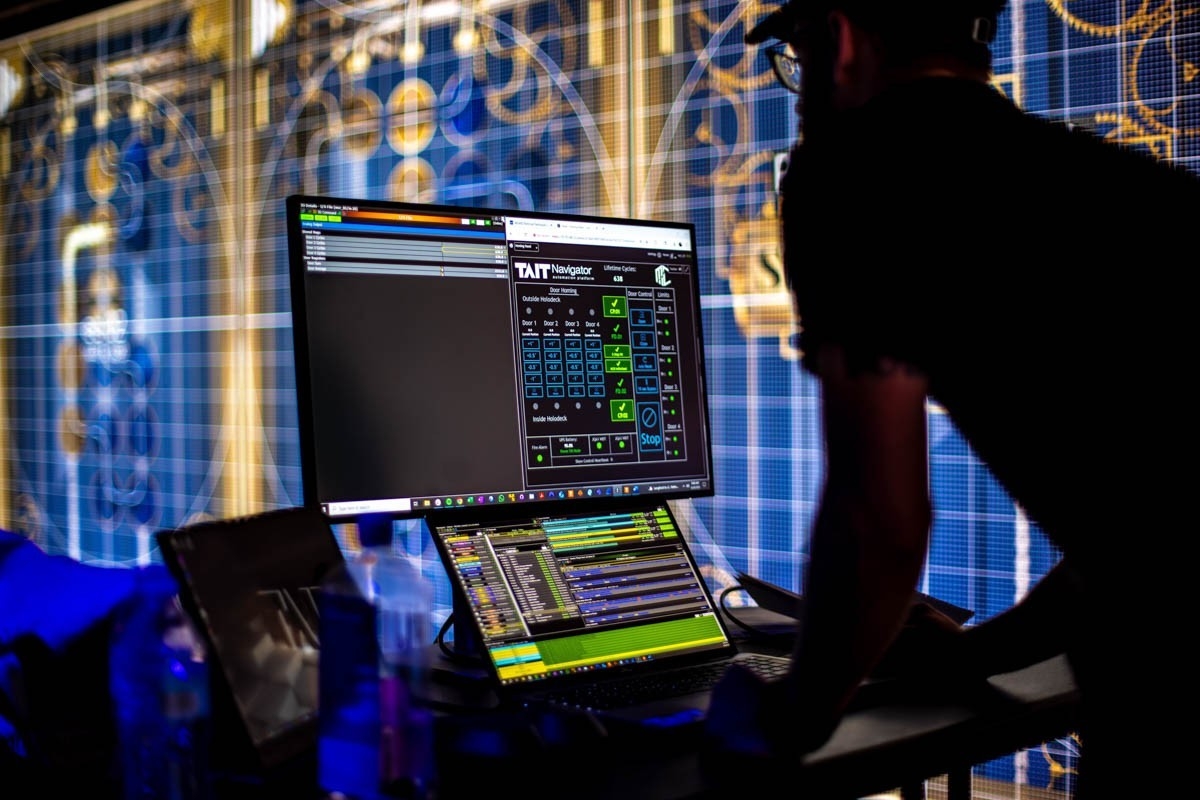
Why do you feel that 4Wall was the right company for this project?
We're the right company because 4Wall has the breadth and expertise to do a project of this scale and scope. This was all encompassing. 4Wall has this incredible team of people who have the experience, knowledge, and know how to successfully complete a project like this. We've been working on MCAAD since 2018.
Like most projects of this kind, it was a long development and install cycle. It was a really interesting project. While I've done other things in the past seven years of my life, really the last seven years of my life have been this project. It was an interesting challenge. Hard to believe it is over and now open. I am very proud of how the MCAAD project turned out. Everyone at 4Wall and TAIT are and rightfully should be. It's an excellent result, and the team did a great, great job, under demanding and ever-changing requirements.
TAIT
Rawi Fayad, Project Manager
Walk me through the TAIT scope of work for the Holodeck at MCAAD.
Working closely with 4Wall, the direct customer on this project, we provided the entire structure for the Holodeck itself that everything needed to hang onto as well as the automation for the four large doors that are the entryway into the Holodeck. We used TAIT Navigator show control for the doors opening and closing. We also provided two manual unpowered emergency exit doors in the event of an automation failure. The doors are covered, on both sides, with LED product, as are all four of the interior walls and ceiling. The LED product, speakers, LIDAR, and any other equipment for inside of the Holodeck was provided by 4Walland hung from our structure.

What were some of the challenges of working in a historical building?
That was one of the first challenges we ran into, it being on the fifth floor of that historical building with a historic ceiling below us on the fourth floor. The biggest thing for us, in addition to the weight limitations, was deflection. We had to make sure we were spreading the load as equally as possible on the floor so that we didn't cause any deflection on the ceiling below. The other challenge we had, because it's an old building, and no one knew what the steel work or structure was like, we couldn't rely on the steel work in the ceiling to rig from. It doesn't touch any of the walls, or any of the ceiling because we couldn't rely on any of that for load support. So, it's an entirely ground supported structure that has to spread its load in way that you're not deflecting the floor either. So, the entire structure basically needed to be self-supported at each stage. It had to be built ground up in this space while ensuring that we were maintaining deflection to a minimum. Also, all the structure had to be brought up in small enough chunks to go up a passenger elevator, because that's all we had access to. We'd send it up in chunks of maximum seven to eight feet, and then build it ground up in the space.
Literally like building a boat in the basement?
Yes, it really was. The advantage of that was it made it relatively easy to do a shop test. Because it's a self-standing structure that only needs a floor, we didn't have to simulate or replicate any of the walls, ceiling, or facility steel in our shop because we weren't using those in the field. So, we were able to just build it once in the shop, test everything under load, take it apart, label it, box it up, and ship it to site.
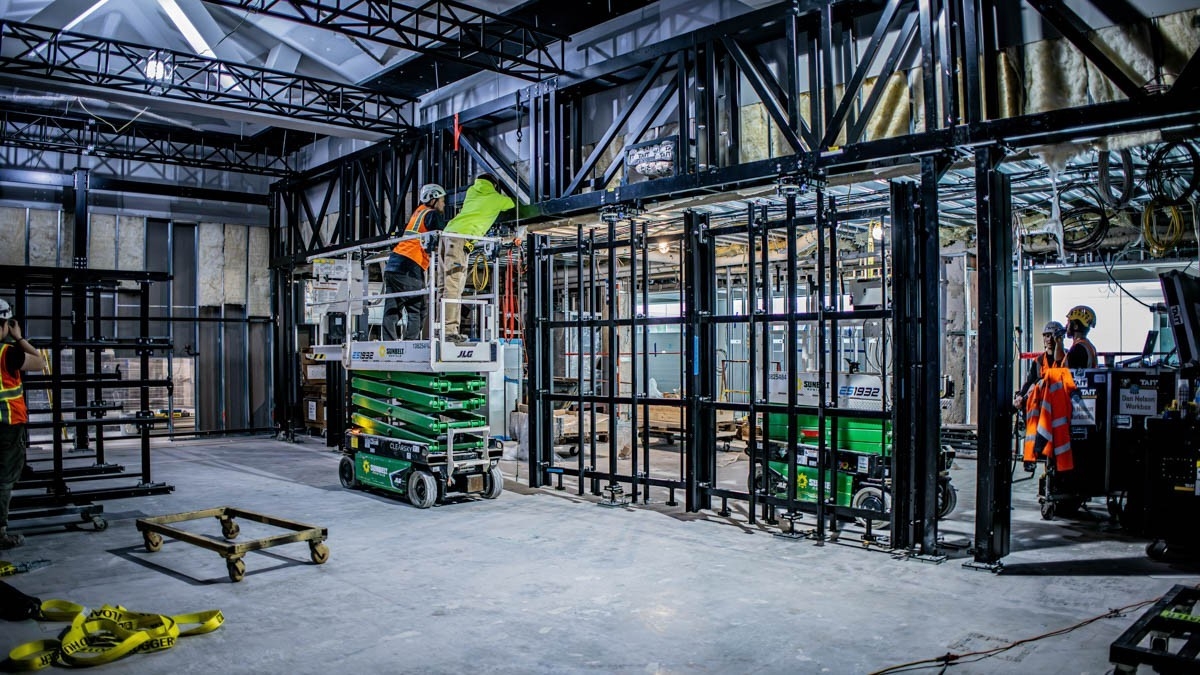
What material did you use, considering the weight restrictions?
It was a mix of steel and aluminum. Both materials are what we're used to using; at TAIT we have a lot of experience with them. Our Haverhill shop, one of our major shops in the UK, deals a lot with steel, so a lot of the steel work came out of that shop. For the elements where we were more concerned with weight, rather than deflection, we could move to aluminum. Those small sections were built in our Wakefield shop in the UK because they're more used to working in aluminum. We played to each strength of the materials, and to the strengths of our shops, to balance the use of steel and aluminum and combining the two. It's a good example of our global reach. We used a lot of our designers out of our London office and the combination of our two UK sites for manufacturing, then we used a local Lititz team for install because of the proximity to the project. So, it was very much a true TAIT global project.
Talk about some of the safety features.
The four doors that are used for show entry and exit are automated. All those doors have light curtains over the top of them on both sides. So, these detect any intrusions into the motion range of the doors. If anyone walks in while the door is moving or stops in the entry, those light curtains will detect that and will safely stop before hitting anyone. Then, in addition, there are the two emergency exit doors, which are unpowered. They're powered shut with a mag lock and a gas spring. So, in the event of either a fire alarm or power failure, that mag lock will release the latch on those two emergency doors, which are on opposite sides of the Holodeck room, and swing open automatically.
Is the frame for the LED panels similar to a touring frame, or completely custom?
It's similar, but a little different. We based it on the LED panels 4Wall were using and tried to make it front accessible for maintenance, since it is a permanent installation. We had to make sure that the ceiling wouldn't sag under all the weight of the LED on there, as well as to make it all fit nicely in the space. We were trying to push the walls out as far as possible in the volume we had, so we thought a lot about how to make the walls as slim as possible. Making everything front accessible as possible meant we didn't have to account for space to squeeze behind the wall if they didn't need to.

Why was TAIT the right company for this project?
One of the unique things that I think TAIT provided for this project was the full package nature of it. So, this was all fully custom, fully bespoke mechanical design. In addition to that, we did all the manufacturing in house. We were able to test build this in our shop from scratch and build the entire Holodeck for FAT [Factory Acceptance Testing]. We were able to combine that with the TAIT Navigator show control system that not only opens and closes the doors, but then also interfaces with the overall building show control system via the Smart Monkeys system. The ability Navigator has to communicate with pretty much any other show control system, or lighting or audio system, was one of the strengths we provided in addition to the expert bespoke mechanical construction.
It was a cool project to work on. I think that everyone involved really enjoyed working on it and just seeing it all come together. It is a great example of the TAIT system, the TAIT family of companies and our global offices, from the UK to Lititz, and ending up in Washington, D.C. We are all very proud of our work on this.
-Photography Courtesy of TAIT
